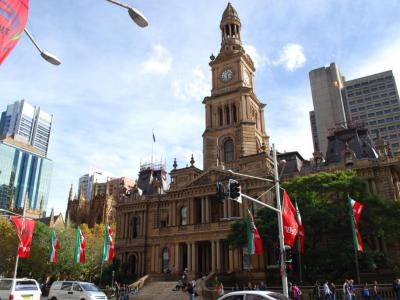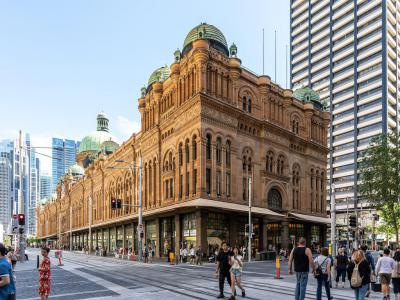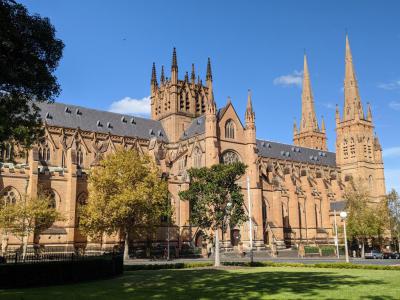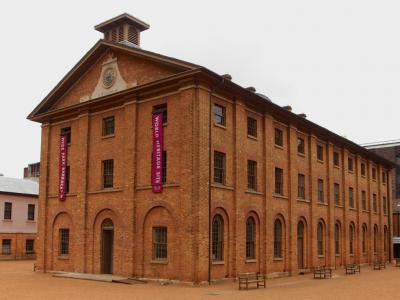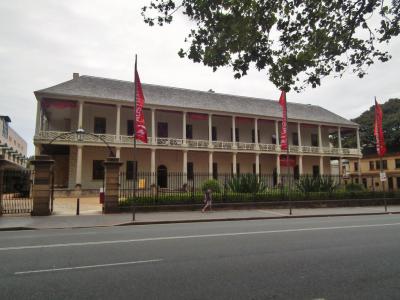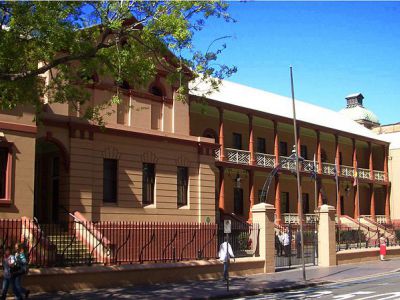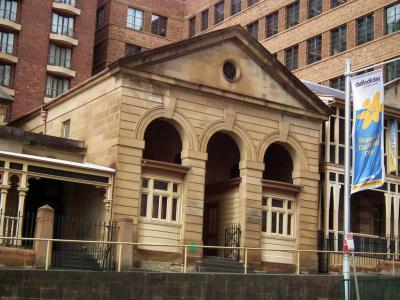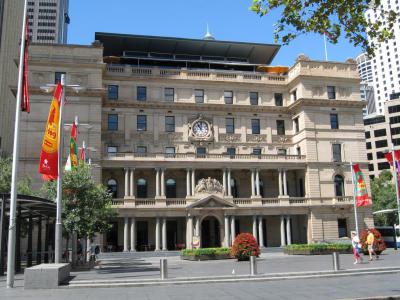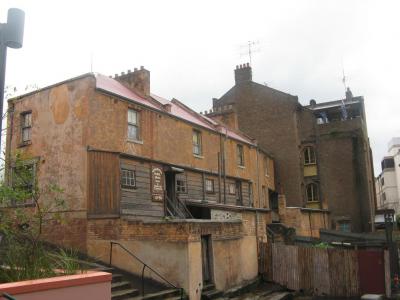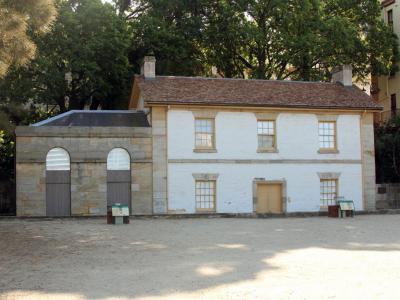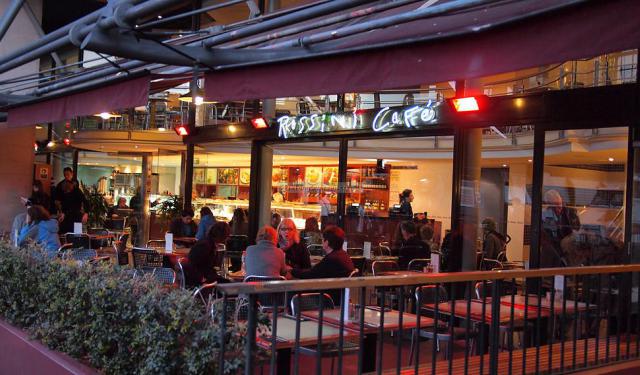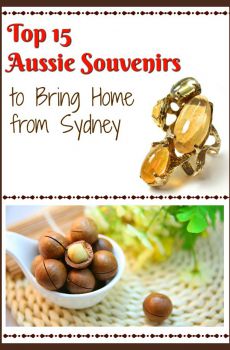Historic Buildings Walking Tour (Self Guided), Sydney
One of the Australia’s largest cities, Sydney is also the country's oldest metropolis. It has no shortage of impressive historical buildings, some dating back as far as the early 19th century. Many of the local landmarks, such as Sydney Town Hall, Queen Victoria Building (QVB), Hyde Park Barracks and others, are wonders in their own right and fit to delight any history buff.
One can spend a good 30 minutes to an hour taking in the Town Hall’s peaceful and grand aura. Built towards the latter part of the 19th century, it is protected under the National Heritage List. With the Queen Victoria Building Shopping Centre nearby, there is no excuse for missing it!
Shrouded in grandeur and an air of solemn history, St. Mary’s is foreboding in size and feel. Following in the tradition of Europe’s great cathedrals, it dominates its surroundings, sitting next to the Hyde Park Barracks and within a short walking distance of other sights like the historic Sydney Mint and the Parliament House.
Further along, there’s lots to like about the Customs House, including the newspapers, history murals, and library inside – but best of all is the miniature Sydney under the glass. Absolutely fascinating, and really gives you a nice perspective of the scale of the city’s buildings and harbors.
If you wish to visit these and other heritage sights in Sydney and to learn the city's story, embark on our self-guided walking tour.
One can spend a good 30 minutes to an hour taking in the Town Hall’s peaceful and grand aura. Built towards the latter part of the 19th century, it is protected under the National Heritage List. With the Queen Victoria Building Shopping Centre nearby, there is no excuse for missing it!
Shrouded in grandeur and an air of solemn history, St. Mary’s is foreboding in size and feel. Following in the tradition of Europe’s great cathedrals, it dominates its surroundings, sitting next to the Hyde Park Barracks and within a short walking distance of other sights like the historic Sydney Mint and the Parliament House.
Further along, there’s lots to like about the Customs House, including the newspapers, history murals, and library inside – but best of all is the miniature Sydney under the glass. Absolutely fascinating, and really gives you a nice perspective of the scale of the city’s buildings and harbors.
If you wish to visit these and other heritage sights in Sydney and to learn the city's story, embark on our self-guided walking tour.
How it works: Download the app "GPSmyCity: Walks in 1K+ Cities" from Apple App Store or Google Play Store to your mobile phone or tablet. The app turns your mobile device into a personal tour guide and its built-in GPS navigation functions guide you from one tour stop to next. The app works offline, so no data plan is needed when traveling abroad.
Historic Buildings Walking Tour Map
Guide Name: Historic Buildings Walking Tour
Guide Location: Australia » Sydney (See other walking tours in Sydney)
Guide Type: Self-guided Walking Tour (Sightseeing)
# of Attractions: 10
Tour Duration: 2 Hour(s)
Travel Distance: 3.1 Km or 1.9 Miles
Author: DanaOffice
Sight(s) Featured in This Guide:
Guide Location: Australia » Sydney (See other walking tours in Sydney)
Guide Type: Self-guided Walking Tour (Sightseeing)
# of Attractions: 10
Tour Duration: 2 Hour(s)
Travel Distance: 3.1 Km or 1.9 Miles
Author: DanaOffice
Sight(s) Featured in This Guide:
- Sydney Town Hall
- Queen Victoria Building (QVB)
- Saint Mary's Cathedral
- Hyde Park Barracks
- Sydney Mint
- Parliament House
- The Justice and Police Museum
- Customs House
- Susannah Place Museum
- Cadmans Cottage
1) Sydney Town Hall
Making your way down George Street, you soon meet Sydney Town Hall—one of the city’s grandest Victorian creations that looks every bit like it refuses to blend in. This sandstone showpiece didn’t appear overnight—it took the city from 1869 to 1889 to finish it, with architects J. H. Willson and later Thomas Sapsford giving it the full High Victorian treatment. Corinthian columns, grand arched windows, domes, carvings, and just enough ornamentation to make a peacock blush—they're all here.
What most passers-by don’t realise is that this civic landmark sits on Sydney’s first official cemetery. Beneath the foundations are traces of the colony’s earliest years—an unexpected reminder that city halls may have stories layered deep under their floorboards...
Once inside, the drama continues. Centennial Hall, unveiled in 1889, is the real star of the building. With its lavish plasterwork, stained-glass windows, and a pipe organ that once held the title of world’s largest, this hall was designed to impress—and it still does. Concerts, ceremonies, grand receptions—you name it, this room makes it sound (and look) spectacular.
Sydney Town Hall also remains a working building, home to the Lord Mayor and City Council. Visitors who join a tour get to wander through its richly decorated rooms, extravagant staircases, and polished hallways that seem determined to prove the 19th century never really left.
And keep an eye on that clock tower. At 55 metres above George Street, it’s been keeping time—and keeping watch—over the city for more than a century.
What most passers-by don’t realise is that this civic landmark sits on Sydney’s first official cemetery. Beneath the foundations are traces of the colony’s earliest years—an unexpected reminder that city halls may have stories layered deep under their floorboards...
Once inside, the drama continues. Centennial Hall, unveiled in 1889, is the real star of the building. With its lavish plasterwork, stained-glass windows, and a pipe organ that once held the title of world’s largest, this hall was designed to impress—and it still does. Concerts, ceremonies, grand receptions—you name it, this room makes it sound (and look) spectacular.
Sydney Town Hall also remains a working building, home to the Lord Mayor and City Council. Visitors who join a tour get to wander through its richly decorated rooms, extravagant staircases, and polished hallways that seem determined to prove the 19th century never really left.
And keep an eye on that clock tower. At 55 metres above George Street, it’s been keeping time—and keeping watch—over the city for more than a century.
2) Queen Victoria Building (QVB) (must see)
If you need proof that Sydney knows how to make a statement, just look at the Queen Victoria Building (colloquially known as QVB)—an entire city block wrapped in sandstone and crowned with a dome big enough to double as a landmark all on its own. Completed in 1898—during an economic depression, no less—this architectural giant was designed by George McRae as a way to keep skilled workers employed. Naming it after Queen Victoria’s Diamond Jubilee was the city’s way of adding a royal ribbon on top.
The style is Romanesque Revival, which was Sydney’s late-19th-century attempt at saying, “Yes, we, too, can do grand arches and serious stonework.” Rounded arcades, carved details, and that massive copper-clad dome—plus four smaller backup domes—give the whole building the confidence of something that fully expects you to stop and stare.
Inside, the QVB stretches across five levels, starting from a basement that plugs directly into public transport and budget-friendly shops, and rising through a tall atrium that funnels light straight from the dome. It’s a place where mosaic floors meet stained-glass windows, cast-iron balustrades, and restored arches—essentially a greatest-hits album of late-Victorian craftsmanship. Staircases and escalators zigzag between the galleries, giving you uninterrupted views down the atrium as you wander.
The 20th century wasn’t always kind to the building. After a long stint hosting offices and municipal odds and ends, it slipped into decline until the 1980s, when a major restoration rescued it from the brink and revived it as a commercial showpiece.
Today, the QVB is where boutiques, cafés, and specialty shops hold court beneath two enormous mechanical clocks—the Royal Clock and the Great Australian Clock—each one staging little historical dramas as you pass underneath. And if you arrive from Druitt Street, Queen Victoria herself is waiting outside—in the form of a statue sculpted in 1908 and originally placed in Dublin before finding a new royal residence here in Sydney.
The style is Romanesque Revival, which was Sydney’s late-19th-century attempt at saying, “Yes, we, too, can do grand arches and serious stonework.” Rounded arcades, carved details, and that massive copper-clad dome—plus four smaller backup domes—give the whole building the confidence of something that fully expects you to stop and stare.
Inside, the QVB stretches across five levels, starting from a basement that plugs directly into public transport and budget-friendly shops, and rising through a tall atrium that funnels light straight from the dome. It’s a place where mosaic floors meet stained-glass windows, cast-iron balustrades, and restored arches—essentially a greatest-hits album of late-Victorian craftsmanship. Staircases and escalators zigzag between the galleries, giving you uninterrupted views down the atrium as you wander.
The 20th century wasn’t always kind to the building. After a long stint hosting offices and municipal odds and ends, it slipped into decline until the 1980s, when a major restoration rescued it from the brink and revived it as a commercial showpiece.
Today, the QVB is where boutiques, cafés, and specialty shops hold court beneath two enormous mechanical clocks—the Royal Clock and the Great Australian Clock—each one staging little historical dramas as you pass underneath. And if you arrive from Druitt Street, Queen Victoria herself is waiting outside—in the form of a statue sculpted in 1908 and originally placed in Dublin before finding a new royal residence here in Sydney.
3) Saint Mary's Cathedral (must see)
Follow College Street for a moment, and those sandstone spires, quietly asserting themselves above the treetops, will tip you off—you’ve reached Saint Mary’s Cathedral. This is the Catholic Archdiocese’s main stage, set right beside Hyde Park, on the very ground where the colony’s first Catholic chapel went up back in 1821. The version standing here today owes its existence to architect William Wardell, who began work on it in 1868.
Saint Mary’s is built from Pyrmont sandstone—the architectural equivalent of a warm sepia filter—and shaped in full Gothic Revival style, featuring pointed arches, flying buttresses, and enough vertical ambition to make medieval Europe nod in approval. The twin spires, finished only in the year 2000, give the cathedral its now-iconic silhouette, perfectly positioned for anyone aiming a camera even vaguely upward.
Step inside and the tone changes instantly. Stone columns rise like they’re trying to join the choir, stained-glass windows paint the light in jewel tones, and the vaulted ceiling creates the kind of acoustics that make even a hum feel profound. The rose window above the western entrance steals the show with shifting patterns of colour, while the reredos, carved choir stalls, and marble altar showcase the hands-on craftsmanship of the 19th century.
Beneath all this sits the crypt—a cool, quiet chamber decorated with mosaics of Australian plants and animals, housing the tombs of the city’s early bishops, including Cardinal Norman Gilroy, Australia’s first homegrown cardinal.
Outside, the cathedral opens onto gardens and Cathedral Square, creating a graceful link to Hyde Park and offering space for gatherings, ceremonies, or simply catching your breath. Set between green lawns and city towers, Saint Mary’s Cathedral stands as a long-running conversation between old-world design and modern Sydney life...
Saint Mary’s is built from Pyrmont sandstone—the architectural equivalent of a warm sepia filter—and shaped in full Gothic Revival style, featuring pointed arches, flying buttresses, and enough vertical ambition to make medieval Europe nod in approval. The twin spires, finished only in the year 2000, give the cathedral its now-iconic silhouette, perfectly positioned for anyone aiming a camera even vaguely upward.
Step inside and the tone changes instantly. Stone columns rise like they’re trying to join the choir, stained-glass windows paint the light in jewel tones, and the vaulted ceiling creates the kind of acoustics that make even a hum feel profound. The rose window above the western entrance steals the show with shifting patterns of colour, while the reredos, carved choir stalls, and marble altar showcase the hands-on craftsmanship of the 19th century.
Beneath all this sits the crypt—a cool, quiet chamber decorated with mosaics of Australian plants and animals, housing the tombs of the city’s early bishops, including Cardinal Norman Gilroy, Australia’s first homegrown cardinal.
Outside, the cathedral opens onto gardens and Cathedral Square, creating a graceful link to Hyde Park and offering space for gatherings, ceremonies, or simply catching your breath. Set between green lawns and city towers, Saint Mary’s Cathedral stands as a long-running conversation between old-world design and modern Sydney life...
4) Hyde Park Barracks
If you’ve ever wondered what early Sydney looked like when “strict rules” weren’t a metaphor but a lifestyle, Hyde Park Barracks is the answer. Sitting smartly on Macquarie Street, right across from Hyde Park, this Georgian brick giant was the handiwork of Francis Greenway, an architect who arrived as a convict and ended up designing half the colony. By 1819, under Governor Lachlan Macquarie, the barracks opened as a dormitory for the men building Sydney’s roads, wharves, and public works. With its neat symmetry, arched windows, and a clock tower that seemed to say “No excuses,” the building was a physical reminder that the colony prized order above all else.
As Sydney grew out of its penal adolescence, the barracks reinvented itself more often than a modern pop star. Once convict transportation stopped, it became an immigration depot for women, then an asylum, and eventually a set of government offices. Each era left its fingerprints—literally. Graffiti, lost objects, and patched-over alterations still hide in corners, turning the building into a three-dimensional scrapbook of Sydney’s past.
Today, Hyde Park Barracks has settled comfortably into its latest role: museum and UNESCO World Heritage Site. Inside, you’ll find interactive exhibits, archaeological treasures, and reconstructed sleeping quarters that show just how tightly packed life once was. Wander through the dormitories, peek into the original cells, and let the audio stories pull you into the routines, hopes, and frustrations of the people who once lived and worked here.
It’s one of Sydney’s clearest glimpses into its early chapters—proof that the city’s modern shine grew from some very bleak brick-and-mortar beginnings...
As Sydney grew out of its penal adolescence, the barracks reinvented itself more often than a modern pop star. Once convict transportation stopped, it became an immigration depot for women, then an asylum, and eventually a set of government offices. Each era left its fingerprints—literally. Graffiti, lost objects, and patched-over alterations still hide in corners, turning the building into a three-dimensional scrapbook of Sydney’s past.
Today, Hyde Park Barracks has settled comfortably into its latest role: museum and UNESCO World Heritage Site. Inside, you’ll find interactive exhibits, archaeological treasures, and reconstructed sleeping quarters that show just how tightly packed life once was. Wander through the dormitories, peek into the original cells, and let the audio stories pull you into the routines, hopes, and frustrations of the people who once lived and worked here.
It’s one of Sydney’s clearest glimpses into its early chapters—proof that the city’s modern shine grew from some very bleak brick-and-mortar beginnings...
5) Sydney Mint
On a street packed with history, the Sydney Mint confidently claims the spotlight as the place where the story begins. It’s one of the city’s oldest colonial survivors—built between 1811 and 1816 as part of Governor Lachlan Macquarie’s ambitious “Rum Hospital,” a name that already tells you everything about early Sydney’s priorities. This sandstone veteran is the oldest public building still standing in the city centre, and it wears its age with confidence.
In 1855, when Sydney struck gold—quite literally, the building was transformed into the first branch of the Royal Mint outside Britain, turning local gold rush fever into neatly stamped sovereigns. To pull off this industrial makeover, prefabricated cast-iron and copper components were shipped from England and bolted together on site, giving Australia some of its earliest examples of modular design long before flat-pack furniture became a thing.
The Mint evolved into a lively industrial hub, blending Georgian architecture from its hospital days with mid-19th-century machinery rooms, workshops, and offices. At its peak, the place buzzed with engravers, engineers, and a few hundred workers who kept the presses rolling. Coin production stopped in 1926, but much of the machinery and detailing stayed put, leaving behind a time capsule of Sydney’s shift from penal outpost to economic powerhouse.
Today, the Sydney Mint enjoys a second life under Sydney Living Museums. Inside, you’ll find exhibition spaces, offices, and a courtyard café that’s dangerously good for lingering. Displays walk you through the building’s many chapters—convict builders, gold sovereigns, architectural tinkering, and all...
With its sandstone façade and elegant colonnaded verandas, the Mint still anchors Macquarie Street’s heritage lineup, standing shoulder to shoulder with the Hyde Park Barracks and Parliament House. Together, they form a rare trio of early colonial institutions that helped shape the Sydney we see today.
In 1855, when Sydney struck gold—quite literally, the building was transformed into the first branch of the Royal Mint outside Britain, turning local gold rush fever into neatly stamped sovereigns. To pull off this industrial makeover, prefabricated cast-iron and copper components were shipped from England and bolted together on site, giving Australia some of its earliest examples of modular design long before flat-pack furniture became a thing.
The Mint evolved into a lively industrial hub, blending Georgian architecture from its hospital days with mid-19th-century machinery rooms, workshops, and offices. At its peak, the place buzzed with engravers, engineers, and a few hundred workers who kept the presses rolling. Coin production stopped in 1926, but much of the machinery and detailing stayed put, leaving behind a time capsule of Sydney’s shift from penal outpost to economic powerhouse.
Today, the Sydney Mint enjoys a second life under Sydney Living Museums. Inside, you’ll find exhibition spaces, offices, and a courtyard café that’s dangerously good for lingering. Displays walk you through the building’s many chapters—convict builders, gold sovereigns, architectural tinkering, and all...
With its sandstone façade and elegant colonnaded verandas, the Mint still anchors Macquarie Street’s heritage lineup, standing shoulder to shoulder with the Hyde Park Barracks and Parliament House. Together, they form a rare trio of early colonial institutions that helped shape the Sydney we see today.
6) Parliament House
Being on Macquarie Street, you can’t help spotting Parliament House holding court—not just figuratively speaking—along Sydney’s most history-soaked civic strip. This is where the Parliament of New South Wales operates, proudly claiming the title of Australia’s oldest continuous legislature.
Curiously enough, its oldest wing wasn’t even built for politicians; it began life as part of the Rum Hospital, a Macquarie-era project from 1811 to 1816 that paid contractors in, yes, actual rum. By the 1820s, the building was repurposed for parliamentary duties, trading medical charts for legislation. The sandstone Georgian façade, all clean lines and careful symmetry, still gives off that distinctly colonial “no-nonsense” energy.
Step beyond that dignified frontage and you’ll find the parliament’s modern side. Extensions from the 1970s and '80s rise behind the old hospital wing, adding chambers, offices, and public galleries designed for a government that long ago outgrew its original waiting room. The contrast between the neat Georgian exterior and the contemporary additions reads like a timeline in architectural form—an evolving snapshot of how New South Wales learned to run itself.
Inside, exhibitions and public programs pull back the curtain on the Legislative Assembly and Legislative Council, explaining how laws have been shaped here since colonial days. And the neighbourhood itself is a historian’s dream: the State Library of New South Wales sits just next door, while Hyde Park Barracks waits across the street with its own tales of early Sydney.
So, basically, as you walk through Parliament House, you’re not just touring a government building—you’re moving through two centuries of political improvisation, ambition, and the occasional rum-fuelled origin story...
Curiously enough, its oldest wing wasn’t even built for politicians; it began life as part of the Rum Hospital, a Macquarie-era project from 1811 to 1816 that paid contractors in, yes, actual rum. By the 1820s, the building was repurposed for parliamentary duties, trading medical charts for legislation. The sandstone Georgian façade, all clean lines and careful symmetry, still gives off that distinctly colonial “no-nonsense” energy.
Step beyond that dignified frontage and you’ll find the parliament’s modern side. Extensions from the 1970s and '80s rise behind the old hospital wing, adding chambers, offices, and public galleries designed for a government that long ago outgrew its original waiting room. The contrast between the neat Georgian exterior and the contemporary additions reads like a timeline in architectural form—an evolving snapshot of how New South Wales learned to run itself.
Inside, exhibitions and public programs pull back the curtain on the Legislative Assembly and Legislative Council, explaining how laws have been shaped here since colonial days. And the neighbourhood itself is a historian’s dream: the State Library of New South Wales sits just next door, while Hyde Park Barracks waits across the street with its own tales of early Sydney.
So, basically, as you walk through Parliament House, you’re not just touring a government building—you’re moving through two centuries of political improvisation, ambition, and the occasional rum-fuelled origin story...
7) The Justice and Police Museum
The Justice and Police Museum occupies a group of historic sandstone buildings at the corner of Albert and Phillip Streets, near Circular Quay. Constructed between 1856 and 1886, the site originally served as the Water Police Court and Police Station, housing both magistrates’ offices and holding cells. The architecture reflects Victorian Classical design, with arched windows, rusticated stonework, and iron-barred doorways that preserve the atmosphere of Sydney’s early legal institutions.
Inside, the museum presents exhibitions exploring crime, law enforcement, and justice in New South Wales from the colonial era to the present day. Restored interiors include the original Police Courtroom, Charge Room, and Cells, where visitors can step inside the narrow lockups once used to detain offenders. Displays feature historical photographs, crime scene evidence, mugshots, and artefacts from notable cases, tracing the evolution of policing and criminal investigation in Sydney.
Interactive exhibits and multimedia presentations provide insight into real-life stories of bushrangers, detectives, and courtroom drama, alongside more recent studies of forensic science and social change. Managed by Sydney Living Museums, the site retains much of its original character, offering a rare glimpse into the working conditions of 19th-century police and judiciary.
Inside, the museum presents exhibitions exploring crime, law enforcement, and justice in New South Wales from the colonial era to the present day. Restored interiors include the original Police Courtroom, Charge Room, and Cells, where visitors can step inside the narrow lockups once used to detain offenders. Displays feature historical photographs, crime scene evidence, mugshots, and artefacts from notable cases, tracing the evolution of policing and criminal investigation in Sydney.
Interactive exhibits and multimedia presentations provide insight into real-life stories of bushrangers, detectives, and courtroom drama, alongside more recent studies of forensic science and social change. Managed by Sydney Living Museums, the site retains much of its original character, offering a rare glimpse into the working conditions of 19th-century police and judiciary.
8) Customs House
Customs House is one of Sydney’s most prominent heritage buildings, standing at Circular Quay where the city first developed around Sydney Cove. Completed in 1845, it originally served as the administrative centre for customs operations, overseeing trade entering the colony through the busy harbour. Built from local sandstone in a restrained Georgian style, the structure later gained Victorian and Federation-era extensions as commerce expanded. Its symmetrical façade, columned portico, and carved coat of arms express the authority and order of a growing colonial port.
Inside, the building’s open atrium reveals a striking contrast between historic architecture and contemporary design. During extensive restorations in the 1990s and early 2000s, interior spaces were reimagined to house a public library, exhibition areas, and event venues while preserving original staircases and decorative detailing. Suspended beneath a glass floor on the ground level is a detailed scale model of Sydney, viewed from above like an aerial map—an installation that draws visitors to the centre of the atrium.
The upper levels feature reading rooms and galleries that host cultural programs and public talks, continuing the site’s civic tradition in a modern form. Outdoor seating beneath the colonnade faces Circular Quay’s promenade, offering views of ferries and the harbour’s constant movement.
Inside, the building’s open atrium reveals a striking contrast between historic architecture and contemporary design. During extensive restorations in the 1990s and early 2000s, interior spaces were reimagined to house a public library, exhibition areas, and event venues while preserving original staircases and decorative detailing. Suspended beneath a glass floor on the ground level is a detailed scale model of Sydney, viewed from above like an aerial map—an installation that draws visitors to the centre of the atrium.
The upper levels feature reading rooms and galleries that host cultural programs and public talks, continuing the site’s civic tradition in a modern form. Outdoor seating beneath the colonnade faces Circular Quay’s promenade, offering views of ferries and the harbour’s constant movement.
9) Susannah Place Museum
Susannah Place Museum occupies four terrace houses standing shoulder to shoulder in The Rocks, quietly doing what they’ve done since 1844: housing everyday life. Built by Irish immigrants Edward and Mary Riley, these modest homes went up in local sandstone and brick, hand-pressed and hand-laid. The Rileys lived in one house and rented out the other three, a practical strategy that helped working families get by in a growing colonial town. What survives today is a rare snapshot of 19th-century domestic life, preserved not for grand design, but for its ordinariness.
Inside, each terrace is set to a different era, tracing how life here changed from the 1840s to the 1970s. Rooms are compact, staircases are narrow, and courtyards are barely more than pauses between walls. Furniture, tools, and household objects—some original, some carefully recreated—show how generations adapted to tight spaces, shifting jobs, and changing expectations. It’s a slow walk through time, measured in worn floors, patched walls, and practical solutions.
One corner holds a restored shop that once supplied the neighbourhood with daily essentials, back when shopping meant conversation over a counter, not aisles and scanners... Along the way, stories of former residents bring names and routines back into these rooms, grounding big historical shifts—industrialisation, urban renewal, redevelopment—in lived experience.
Run by Sydney Living Museums, Susannah Place doesn’t aim to impress. It aims to remember. Within these four terraces, Sydney’s immigrant and working-class history survives at human scale, offering a clear, unsentimental look at how the city was built from the inside out.
Inside, each terrace is set to a different era, tracing how life here changed from the 1840s to the 1970s. Rooms are compact, staircases are narrow, and courtyards are barely more than pauses between walls. Furniture, tools, and household objects—some original, some carefully recreated—show how generations adapted to tight spaces, shifting jobs, and changing expectations. It’s a slow walk through time, measured in worn floors, patched walls, and practical solutions.
One corner holds a restored shop that once supplied the neighbourhood with daily essentials, back when shopping meant conversation over a counter, not aisles and scanners... Along the way, stories of former residents bring names and routines back into these rooms, grounding big historical shifts—industrialisation, urban renewal, redevelopment—in lived experience.
Run by Sydney Living Museums, Susannah Place doesn’t aim to impress. It aims to remember. Within these four terraces, Sydney’s immigrant and working-class history survives at human scale, offering a clear, unsentimental look at how the city was built from the inside out.
10) Cadmans Cottage
Cadmans Cottage is one of those buildings that makes modern Sydney pause for a moment. Built in 1816 from locally quarried sandstone, it once sat right on the edge of Sydney Cove, before land reclamation pushed the shoreline away and left it slightly inland. Its neat Georgian symmetry wasn’t about style purely for style’s sake—it was designed to work. This was the combined home and office of the Coxswain of Government Boats, the person in charge of the colony’s small but essential harbour fleet.
As Sydney expanded, the cottage kept changing jobs. In the 1840s, it became the headquarters of the Water Police, reflecting growing concerns about order along the busy waterfront. Later in the 19th century, it was absorbed into the Sydney Sailors’ Home, offering lodging for seafarers who arrived tired, broke, or simply between voyages. Each phase left marks behind, from altered rooms to added details, creating a layered record of how the harbour community functioned day to day. Restoration work has carefully peeled back those layers, making the building’s many lives visible rather than polishing them away.
Today, Cadmans Cottage finds itself amid cobbled lanes, historic pubs, and former warehouses, its rough sandstone walls set against glass towers and traffic noise. Inside, interpretive displays unpack the stories of officials, sailors, and workers who passed through its doors. It’s a small building with a long memory—one that quietly reminds visitors that Sydney began as a working harbour, long before it became a postcard skyline...
As Sydney expanded, the cottage kept changing jobs. In the 1840s, it became the headquarters of the Water Police, reflecting growing concerns about order along the busy waterfront. Later in the 19th century, it was absorbed into the Sydney Sailors’ Home, offering lodging for seafarers who arrived tired, broke, or simply between voyages. Each phase left marks behind, from altered rooms to added details, creating a layered record of how the harbour community functioned day to day. Restoration work has carefully peeled back those layers, making the building’s many lives visible rather than polishing them away.
Today, Cadmans Cottage finds itself amid cobbled lanes, historic pubs, and former warehouses, its rough sandstone walls set against glass towers and traffic noise. Inside, interpretive displays unpack the stories of officials, sailors, and workers who passed through its doors. It’s a small building with a long memory—one that quietly reminds visitors that Sydney began as a working harbour, long before it became a postcard skyline...
Walking Tours in Sydney, Australia
Create Your Own Walk in Sydney
Creating your own self-guided walk in Sydney is easy and fun. Choose the city attractions that you want to see and a walk route map will be created just for you. You can even set your hotel as the start point of the walk.
Newtown Street Murals Walking Tour
Whenever you think of street art in Sydney, one suburb immediately springs to mind and that is Newtown. Largely regarded as Sydney’s coolest neighborhood, this is a ground zero of the city's mural art scene.
Ever since the early 1990s, with the appearance of the famous “I Have a Dream” Mural on King Street, a powerful depiction of Martin Luther King Junior's iconic speech, this... view more
Tour Duration: 1 Hour(s)
Travel Distance: 1.3 Km or 0.8 Miles
Ever since the early 1990s, with the appearance of the famous “I Have a Dream” Mural on King Street, a powerful depiction of Martin Luther King Junior's iconic speech, this... view more
Tour Duration: 1 Hour(s)
Travel Distance: 1.3 Km or 0.8 Miles
The Rocks Walking Tour
The Rocks is a historic area and the oldest neighborhood in downtown Sydney. It was the site where on 26 January 1788 a Union flag was raised to announce the establishment of the first British penal colony in New South Wales. Many of the old stone buildings are made of quarry stones hand-chipped by early convicts, which gave the area its name.
Today's Rocks is a thriving locality packed... view more
Tour Duration: 1 Hour(s)
Travel Distance: 1.3 Km or 0.8 Miles
Today's Rocks is a thriving locality packed... view more
Tour Duration: 1 Hour(s)
Travel Distance: 1.3 Km or 0.8 Miles
Sydney Introduction Walking Tour
Sydney was found in 1788 when a fleet of eleven British ships arrived at where Sydney Cove is today. Onboard those pioneer vessels were 759 convicts plus sailors and marines to guard them. The city was named after Lord Sydney, the British Secretary of State who recommended the British government to establish a penal colony in Australia.
Human activity in the area that would later become Sydney... view more
Tour Duration: 2 Hour(s)
Travel Distance: 3.5 Km or 2.2 Miles
Human activity in the area that would later become Sydney... view more
Tour Duration: 2 Hour(s)
Travel Distance: 3.5 Km or 2.2 Miles
Sydney's Historical Churches
Over the years, Sydney's historical churches have aroused a sense of admiration in many beholders. Some of these buildings have even become iconic symbols of Sydney, well worth going a good way to see as vivid examples of both historical and architectural value.
The impressive Early English-style of architecture seen in Saint Mary's Cathedral is said to have inspired the American... view more
Tour Duration: 1 Hour(s)
Travel Distance: 3.2 Km or 2 Miles
The impressive Early English-style of architecture seen in Saint Mary's Cathedral is said to have inspired the American... view more
Tour Duration: 1 Hour(s)
Travel Distance: 3.2 Km or 2 Miles
Food Tour in Sydney
Sydney is a melting pot, and the local food culture is a sure testament to that. The inflow of immigrants from Europe and Asia over the years has turned the city into a much coveted foodie destination. This tour offers an introduction to the multifaceted and diverse food & brewery experience to be had here.
Start with Gateway Sydney, an upscale food court with WiFi and just about any kind... view more
Tour Duration: 1 Hour(s)
Travel Distance: 2.2 Km or 1.4 Miles
Start with Gateway Sydney, an upscale food court with WiFi and just about any kind... view more
Tour Duration: 1 Hour(s)
Travel Distance: 2.2 Km or 1.4 Miles
Useful Travel Guides for Planning Your Trip
Top 15 Aussie Souvenirs to Bring Home from Sydney
"You haven't been anywhere if you haven't been to Australia," they say, and you'd definitely want something tangible in hand to remind you of the g'days spent Down Under. In Sydney, you will find tonnes of distinctly Oz products that would serve this purpose...
The Most Popular Cities
/ view all



